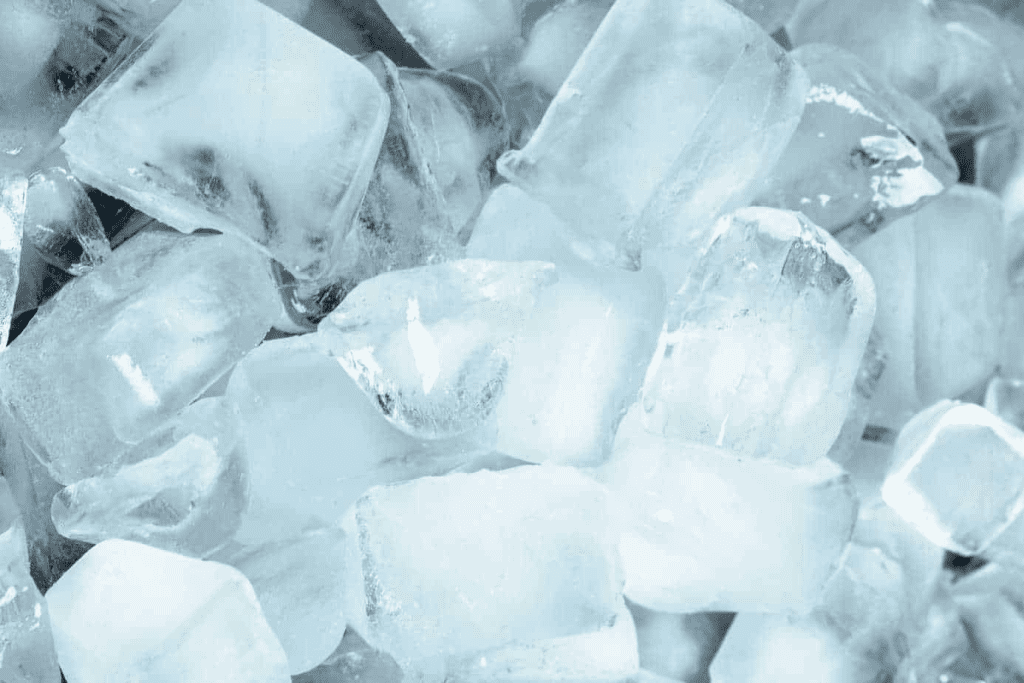Have you ever wondered why some ice cubes are perfectly crystal clear, while others appear cloudy and milky? It might seem like a small detail, but the difference in appearance actually reveals a lot about the water used and the freezing process itself. Let’s dive into the fascinating science behind clear and cloudy ice, and discover how you can make those beautiful, glass-like ice cubes right at home.

Why Does Ice Become Cloudy? Understanding Impurities in Water
Cloudy ice cubes typically result from the water source and the way it freezes. Most of us use tap water to fill up our ice trays. However, tap water contains various dissolved minerals and impurities, such as calcium, lime, fluoride, nitrates, magnesium, and other trace organic substances. While many of these substances are beneficial for our health, they affect the clarity of ice.
When you freeze tap water, the freezing process starts from the outside and moves inward. As the outer layers freeze, the impurities and dissolved gases are pushed toward the center of the ice cube. This results in a central area that appears cloudy and white, as these impurities become trapped and create that foggy look.
The Role of Boiled and Purified Water in Making Clear Ice
If you’ve ever noticed that some ice cubes from fancy bars or upscale restaurants are almost perfectly transparent, you’ve likely encountered ice made with boiled or purified water. Boiling water can reduce the cloudiness in ice cubes because it removes some of the dissolved gases and breaks down certain impurities that cause cloudiness. This method is particularly helpful when using tap water.
Alternatively, using purified or distilled water to make ice results in greater clarity. Bottled mineral water often has fewer impurities, allowing it to freeze more uniformly, reducing the number of trapped gases and minerals that create that cloudy effect. The result? Ice cubes that are clearer, cleaner, and more aesthetically pleasing.
Directional Freezing: The Professional’s Secret to Crystal Clear Ice
For those who want to take ice-making to the next level, there’s a method known as directional freezing. This process involves freezing water in a single direction, which encourages any remaining gases and impurities to escape from one side rather than being trapped in the center. Directional freezing is often used by bartenders and cocktail enthusiasts who want to elevate the appearance of their drinks.
To achieve directional freezing, the water is placed in an insulated container, which allows the ice to freeze from the top down, similar to how a lake freezes over. As the ice forms, the impurities are pushed down and away, resulting in beautifully clear ice. While this process might sound complicated, there are ice molds available for home use that can help you achieve similar results.

How to Make Clearer Ice at Home: A Few Simple Tricks
If you want to experiment with making clearer ice at home, there are a few easy tricks you can try, even without special equipment. Here are some popular methods:
- Boil the Water: Start by boiling the water once, let it cool, and then boil it again. This double-boiling process helps to remove as many dissolved gases as possible, resulting in clearer ice. Once the water cools down, pour it into your ice tray and freeze as usual.
- Use Distilled Water: Distilled or purified water has fewer minerals and impurities, which can lead to clearer ice. Just fill up your ice tray with distilled water and place it in the freezer. This won’t guarantee completely clear ice, but it significantly reduces the cloudiness.
- Slow Freezing: Slower freezing can lead to clearer ice. You can simulate directional freezing by placing your ice tray inside a larger insulated container (like a cooler) and then putting it in the freezer. This slows down the freezing process, pushing impurities toward the bottom and leaving the top layer much clearer.
Why Does Clear Ice Matter? Beyond Just Looks
You might be wondering—does it really matter if ice is clear or cloudy? The answer depends on how you want to use it. Clear ice cubes aren’t just for show; they actually have some practical benefits, especially when it comes to beverages:
- Slower Melting: Clear ice tends to melt more slowly than cloudy ice. This is because it contains fewer air bubbles and impurities, which means it stays colder for longer. For those who enjoy cocktails, this can be a big plus, as it prevents drinks from being watered down too quickly.
- Improved Taste: Some people claim that clear ice cubes don’t alter the taste of drinks the way cloudy ice might. Although the effect is subtle, the presence of trapped impurities in cloudy ice can slightly affect the flavor of your drink, especially in beverages that are meant to be sipped slowly.
- Aesthetic Appeal: For those who enjoy beautifully crafted cocktails or simply take pride in presentation, clear ice cubes are visually appealing. They add an extra touch of elegance and sophistication, which can make a drink look more refined and professionally crafted.
The Science of Freezing: What Creates the Difference?
The clarity of ice is all about how gases and impurities interact with water molecules as they freeze. When water cools rapidly, the impurities don’t have time to escape, resulting in a cloudy appearance. By slowing down the freezing process and using purer water, you’re allowing the water molecules to align themselves more orderly, which produces that coveted crystal-clear ice.

Does the Freezer Environment Affect Ice Clarity?
The environment inside your freezer can also influence how clear your ice turns out. Freezers with frost-free settings may lead to quicker freezing, trapping more air and impurities in the ice. Additionally, freezing ice in the back of the freezer or in an area with direct contact with colder surfaces might result in a more cloudy ice appearance due to the speed at which the water freezes.
For optimal results, try freezing ice in the middle of the freezer where the temperature is more consistent. Using the methods discussed, such as directional freezing, and letting the water freeze at a slightly slower rate can enhance clarity, even in a standard home freezer.
Conclusion: The Beauty and Function of Clear Ice
Next time you reach for an ice cube, take a moment to notice its clarity. Is it cloudy, or is it clear? The difference might be subtle, but it speaks volumes about the water used and the method of freezing. Whether you’re making cocktails for a party or simply enjoying a cold drink at home, knowing how to make clear ice can add a touch of sophistication to your beverages.
Clear ice isn’t just a gimmick; it’s an art form that elevates the experience of enjoying a cold drink. With just a few tweaks to your water and freezing methods, you can achieve those stunning, glass-like ice cubes right at home, impressing guests and improving your drink’s quality. Give it a try, and see the difference for yourself!


